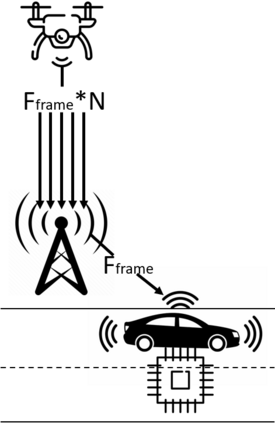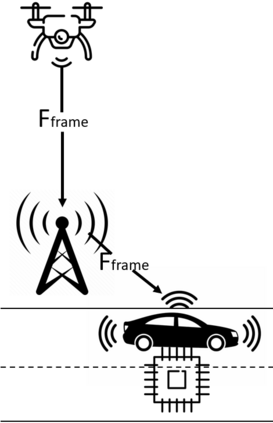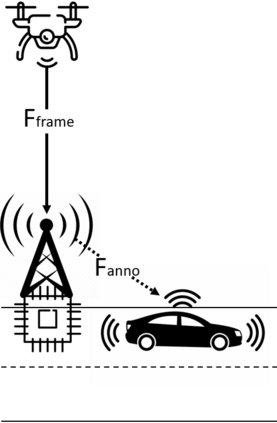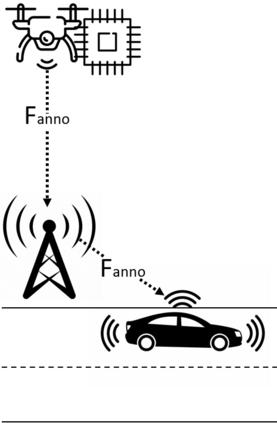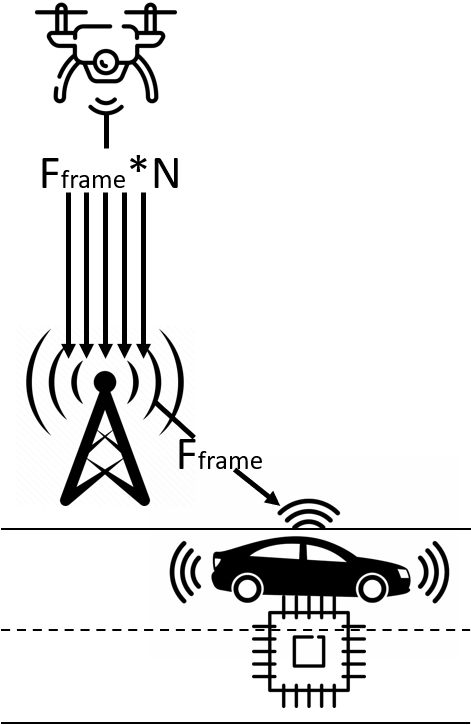For autonomous vehicles to operate without human intervention, information sharing from local sensors plays a fundamental role. This can be challenging to handle with bandwidth-constrained communication systems, which calls for the adoption of new wireless technologies, like in the mmwave bands, to solve capacity issues. Another approach is to exploit uav, able to provide human users and their cars with an aerial bird's-eye view of the scene otherwise unavailable, thus offering broader and more centralized observations. In this article we combine both aspects and design a novel framework in which uav, operating at mmwave, broadcast sensory information to the ground as a means to extend the (local) perception range of vehicles. To do so, we conduct a full-stack end-to-end simulation campaign with ns-3 considering real UAV data from the Stanford Drone Dataset, and study four scenarios representing different uav-to-ground communication strategies. Our results focus on the trade-off between centralized data processing in the sky vs. distributed local processing on the ground, with considerations related to the throughput, latency and reliability of the communication process.
翻译:为使自主车辆在没有人类干预的情况下运作,当地传感器的信息共享具有根本作用。这在应对带宽限制的通信系统方面可能具有挑战性,这些系统要求采用新的无线技术,如毫米波波段中的无线技术,以解决能力问题。另一种办法是利用Uav,能够向人类用户及其汽车提供空中鸟眼观,否则无法对现场进行空中飞行,从而提供更广泛和更集中的观测。在本篇文章中,我们将两个方面结合起来,并设计一个新型框架,在毫米波上将感官信息传送到地面,作为扩大(当地)车辆感知范围的一种手段。为此,我们开展了一个全堆端到端的模拟运动,Ns-3考虑斯坦福德龙数据集的真正UAV数据,并研究代表不同地对地通信战略的四种情景。我们的结果侧重于天空中央数据处理与地面分散的当地处理之间的交换,同时考虑通信过程的吞吐、静和可靠性。

